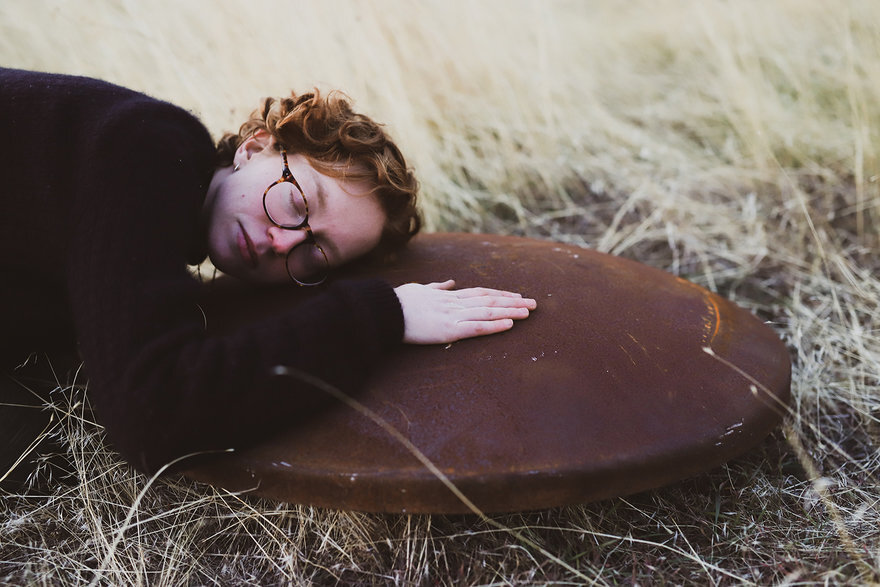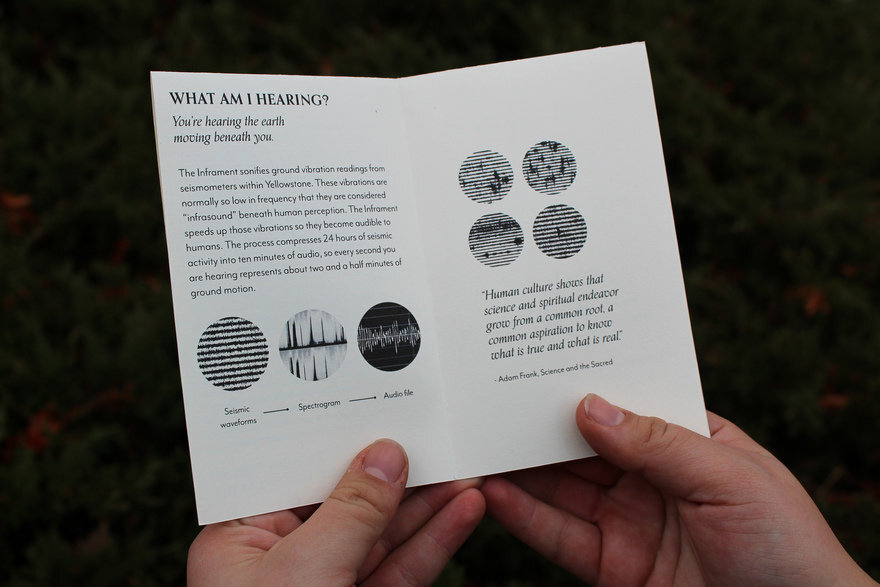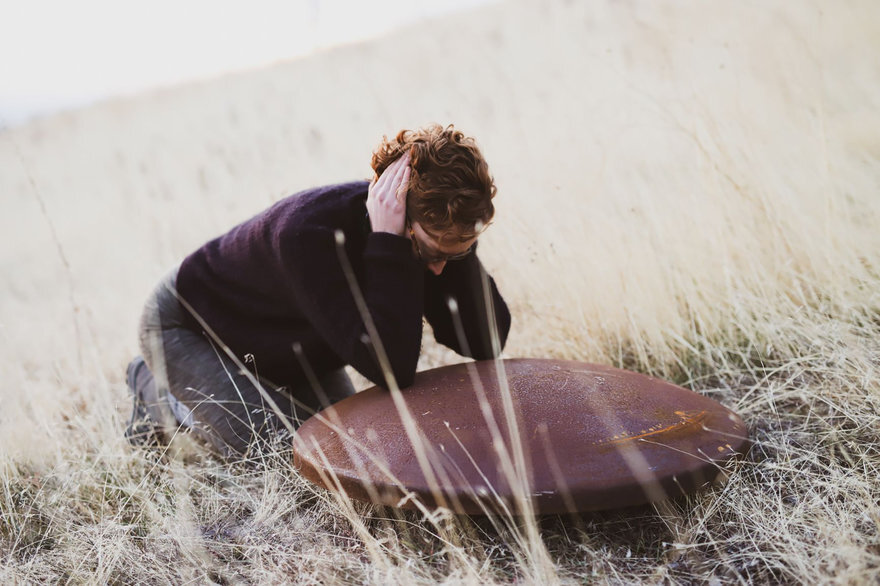Feeling the sublime in Yellowstone
Fall 2019
Two University of Utah seniors have transformed their Multi-Disciplinary Design Program experience in the College of Architecture + Planning into a “Student Runner Up” win from the 2020 Core77 Design Awards. The team rose to prominence from a field of more than 200 global submissions across 18 different categories.
Designed by Lucy Allen and Jackson Kerbs, the “Inframent: A Seismic Conversation,” was inspired by the Field Studio excursions to Yellowstone National Park, led by Elpitha Tsoutsounakis, Multi-Disciplinary Design Program’s associate director.
The Field Studio uses design research to explore the question of wilderness through a lens of equity and inclusion. Each student is asked to develop their own land ethic for ancestral territories, public lands, conservation and experience in nature. Allen and Kerbs designed the “inframent” to be a sound experience that invites Yellowstone visitors to feel a connection to the vibrations of the caldera. The term “inframent,” coined by Allen, is a combination of the prefix “infra-” meaning “below” and the suffix “-ment,” which turns an adjective into a noun, turning the descriptor of “infra” into an object—an instrument from below. The process took seismic data from as many as 32 different locations and translated it into sound files that then sped up from infrasonic vibrations from the seismometers to an audible frequency.
Next, a sound instrument made of an oxidized steel shell was created to encase a bass shaker and amplifier that would vibrate the shell with the waves of the seismic motion. The vibrations created both audible sound and physical vibrations that encouraged participants to touch the surface and feel the motion of the ground.
Kneeling next to the instrument in a prayer-like position—with bent elbows placed on the surface of the drum and hands supporting the head next to the ears—was encouraged to emphasize the effect of bone touchpoints. This position, or resting the head directly on the drum, was ideal to both hear and feel the vibrations as they move through the human body and create a connection to the earth, where the sacred vibrations originate.
Allen and Kerbs used a MATLAB script courtesy of U geologist Jeff Moore to create models and access to the U’s seismometer network was granted courtesy of Jamie Farrell.
The Field Studio
The studio serves the larger ethos of the design program to educate designers with ecological awareness who are critical of the environmental and social impacts of design disciplines. Student projects range from speculative to commercial responses in digital, physical and platform products.
Tsoutsounakis developed the Field Studio in fall 2018 in partnership with Yellowstone Forever. It has taken two cohorts of students to experience the park from a design perspective to engage with experts in Yellowstone National Park and participate in field seminars with Yellowstone Forever. A spring 2019 studio also worked with Friends of Cedar Mesa in Bears Ears National Monument.
The Multi-Disciplinary Design Program is actively transforming design education as a bridge to ethical, research-informed and transformative experience design regardless of scale and impact. The Field Studio will continue this fall. For more information and opportunities to collaborate, contact Tsoutsounakis at elpitha@design.utah.edu.
Story: Shawn Wood / communications specialist, University of Utah Communications
Photos: Lucy Allen & Jackson Kerbs








